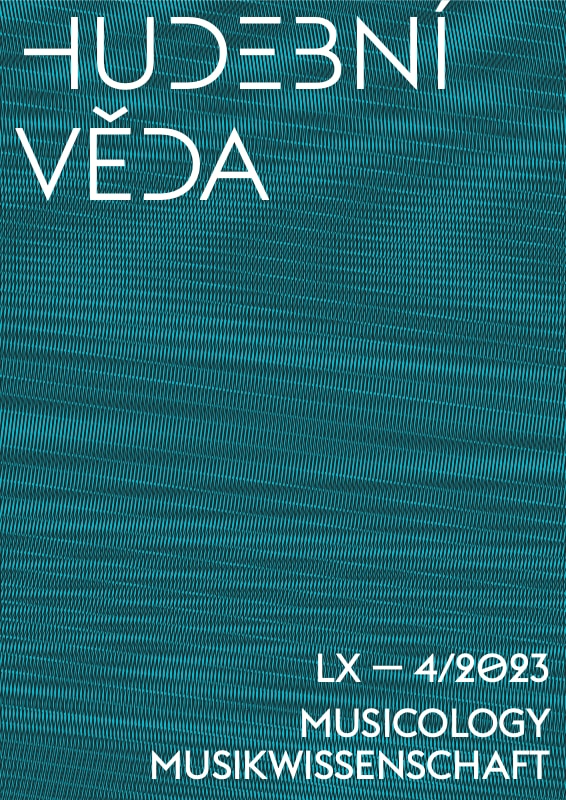Článek | Article
Autor:
Eva Vičarová – Sławomir Wieczorek
Název:
The Holocaust Commemoration Through Music and Sounds in Terezín and Auschwitz-Birkenau after 1989
Variantní název:
Připomínání holocaustu prostřednictvím hudby a zvuků v Terezíně a Osvětimi-Březince po roce 1989
Zdrojový dokument:
Hudební věda LX (2023), č. 4, s. 461–500.
DOI:
https://doi.org/10.54759/MUSICOLOGY-2023-0402
Trvalý odkaz:
https://kramerius.lib.cas.cz/uuid/uuid:5c0fe550-43dd-48cd-abc2-5ce76e159bb9
English summary:
The article characterizes the importance of sound and music in public events commemorating the Holocaust in Poland and the Czech Republic after 1989. Two events were selected: the Terezín commemoration and the celebration of the liberation of Auschwitz-Birkenau. The reconstruction of official ceremonies is based on materials collected during archival research, as well as on audiovisual documentation and interviews. The main methodological framework has been soundscape theory and memory studies, supplemented by some concepts such as “listening in the grey zone” or “the affective kitsch of the Holocaust”. Included in the article are passages reporting on what music looked like in the Auschwitz-Birkenau concentration camp and the Terezín ghetto during the Holocaust and the literature on it. The two main chapters of the thesis analyse how the repertoire performed during the ceremonial events and the concerts organised within them evolved. The sound and musical character of the festivities is evaluated in relation to the changes in the collective memory of the Holocaust in the Czech Republic and Poland.
České resumé:
Článek charakterizuje význam zvuku a hudby při veřejných akcích připomínajících holokaust v Polsku a České republice po roce 1989. Byly vytipovány dvě akce: Terezínská tryzna a oslavy osvobození Osvětimi-Březinky. Rekonstrukce oficiálních ceremoniálů vychází z materiálů shromážděných během archivních výzkumů, ale i z audiovizuální dokumentace a rozhovorů. Hlavním metodologickým rámcem se staly teorie zvukové krajiny (soundscape) a paměťových studií, doplněné o některé koncepty, jako např. „poslech v šedé zóně” nebo „afektivní kýč holokaustu”. Součástí článku jsou pasáže informující o tom, jak hudba v koncentračním táboře Osvětim-Březinka a terezínském ghettu v době holokaustu vypadala, a jaká literatura o ní pojednává. Dvě hlavní kapitoly práce analyzují, jak se vyvíjel repertoár uváděný během slavnostních událostí i koncertů organizovaných v jejich rámci. Zvukový i hudební ráz slavností je vyhodnocen vzhledem k proměnám kolektivní paměti holokaustu v Česku a Polsku.
Keywords:
music; holocaust; memory; soundscape; Auschwitz-Birkenau; Terezín ghetto; commemorations; Terezín Triduum; Terezín composers; Krzysztof Knittel; Krzysztof Penderecki
Klíčová slova:
hudba; holocaust; paměť; soundscape; Osvětim-Březinka; terezínské ghetto; připomínání, Terezínská tryzna; terezínští skladatelé; Krzysztof Knittel; Krzysztof Penderecki

